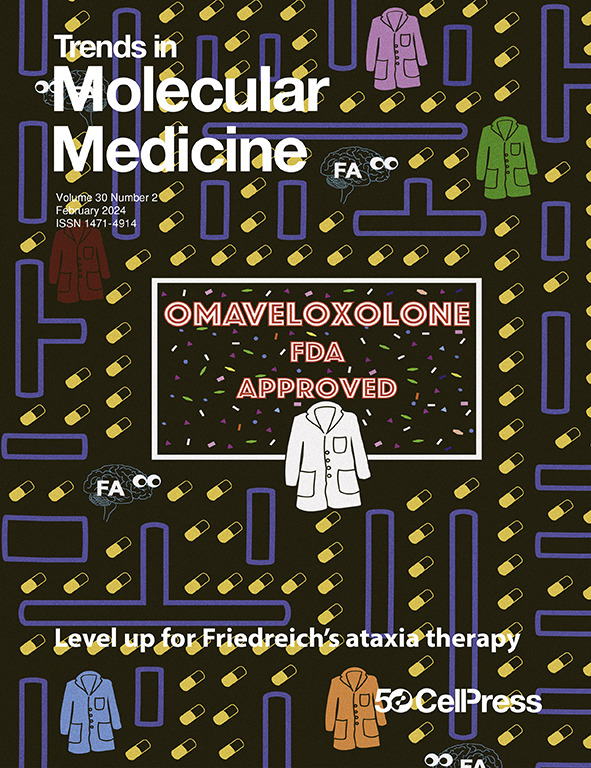自身抗体作为神经性疼痛的驱动因素。
IF 13.8
1区 医学
Q1 BIOCHEMISTRY & MOLECULAR BIOLOGY
引用次数: 0
摘要
免疫治疗的临床反应和被动转移模型中感觉症状的再现支持了新出现的证据,表明自身抗体(AAbs)可能驱动神经性疼痛。这些发现强调了免疫谱分析在增强诊断和治疗方面的重要性,并为临床背景下更广泛的疼痛机制提供了分子见解。本文章由计算机程序翻译,如有差异,请以英文原文为准。
Autoantibodies as drivers of neuropathic pain.
Emerging evidence, supported by clinical responses to immunotherapy and the recapitulation of sensory symptoms in passive transfer models, shows that autoantibodies (AAbs) may drive neuropathic pain. These findings highlight the importance of immune profiling to enhance diagnosis and treatment, and provide molecular insights into broader pain mechanisms in clinical contexts.
求助全文
通过发布文献求助,成功后即可免费获取论文全文。
去求助
来源期刊

Trends in molecular medicine
医学-生化与分子生物学
CiteScore
24.60
自引率
0.00%
发文量
142
审稿时长
6-12 weeks
期刊介绍:
Trends in Molecular Medicine (TMM) aims to offer concise and contextualized perspectives on the latest research advancing biomedical science toward better diagnosis, treatment, and prevention of human diseases. It focuses on research at the intersection of basic biology and clinical research, covering new concepts in human biology and pathology with clear implications for diagnostics and therapy. TMM reviews bridge the gap between bench and bedside, discussing research from preclinical studies to patient-enrolled trials. The major themes include disease mechanisms, tools and technologies, diagnostics, and therapeutics, with a preference for articles relevant to multiple themes. TMM serves as a platform for discussion, pushing traditional boundaries and fostering collaboration between scientists and clinicians. The journal seeks to publish provocative and authoritative articles that are also accessible to a broad audience, inspiring new directions in molecular medicine to enhance human health.
 求助内容:
求助内容: 应助结果提醒方式:
应助结果提醒方式:


